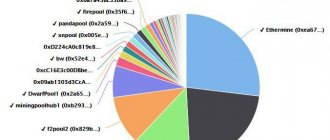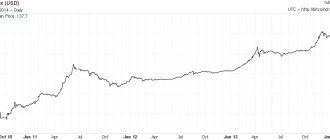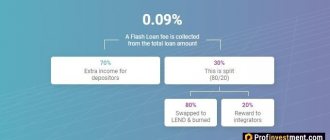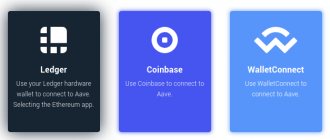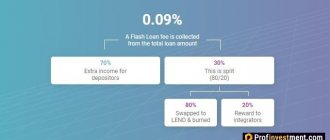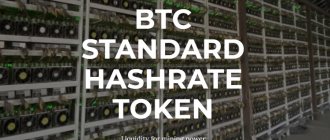BitPapa - P2P cryptocurrency exchange
Ripple cryptocurrency review . The first and to this day the main cryptocurrency is Bitcoin. And, whatever one may say, all subsequent coins are similar to it. And even if they are super-mega-unique, the very fact that they work on the blockchain confirms that altcoins have borrowed at least something from their older brother.
But the same cannot be said about the Ripple cryptocurrency. It has no connection to the blockchain and runs on its own protocol. This very protocol is based on a distributed registry. It is open source and operates on the principle of consensus, that is, agreement. Let us immediately note that the developers of Ripple did not even think about any cryptocurrencies. Work on the project began in 2004, when cryptocurrencies were unheard of.
Initially, the creators had a different goal - to create a system of global and free payments. This idea was quite successful and, as a result, the internal settlement coin Ripple was born, which was successfully included in the ranks of cryptocurrencies. And it is not just in these ranks, but conveniently located at the very top of the cryptocurrency TOP. Its capitalization is about $12 billion. Today, Ripple holds second place among all respected cryptocurrencies.
But Ripple has a very specific relationship with Bitcoin. Many experts say that if the role of the world’s reserve currency shines for cryptocurrencies, then Ripple is more likely to receive this honor, and not Bitcoin. And no matter how much we love Bitcoin, we must admit that in terms of technical parameters it is inferior to many cryptocurrencies.
Ripple, as a global settlement system, has found active use in the banking sector and a huge list of financial institutions around the world have already adopted its protocol. Very soon, Ripple could greatly change the face of the banking industry. Already today it creates real competition for systems such as SWIFT and Western Union.
The history of the creation of the Ripple project?
It all started with a development called RipplePay in 2004, four years before Bitcoin was created. The first version of the system, RipplePay.com, was released in 2005. Ryan Fugger, the creator of RipplePay, met Jed McCaleb, who was developing the eDonkey file-sharing network, as well as other members of this network, Arthur Britto and David Schwartz.
In 2011, they completely rethought the concept of Ripple and decided to rely on a decentralized network, which, unlike Bitcoin, does not involve mining. At the same time, the Ripple network works much faster than the Bitcoin network. In 2012, they were joined by Chris Larsen, who had previously founded two electronic lending systems.
Since 2012, their subsidiary OpenCoin Inc. Involved in improving the payment protocol. September 26, 2013 OpenCoin Inc. changed its name to Ripple Labs Inc. The original team retired and Chris Larsen became director. And since 2014, the company has refocused on cooperation with banks.
The first bank to start working with them was the German bank Fidor from Munich in 2014. In December 2014, the XRP cryptocurrency briefly surpassed Litecoin, breaking into second place in terms of market capitalization, which reached $500 million. At the end of April 2015, Western Union became interested in their technology, and at the end of May, the Commonwealth Bank of Australia.
The project also had setbacks, for example, a $700,000 fine issued to Ripple Labs in 2015 for violating bank secrecy. But another success of that year was the opening of an office in Sydney, Australia.
What is the difference between Bitcoin and XRP?
There are several basic differences between Bitcoin and Ripple, even though they may look similar. The differences between the given cryptocurrencies include the following points:
- Bitcoin is a decentralized network that is based on a blockchain, that is, a database. Bitcoins are stored in specific wallets and do not have a common server. Ripple is not a cryptocurrency in its pure form, as it is a platform that serves transactions and protocols with open source code. The platform primarily deals with interbank transactions.
- It is possible to mine, that is, “mine” Bitcoins, while this possibility with respect to XRP is almost completely absent.
- It is impossible to cancel a transaction made with Bitcoins, but with Ripple it is quite possible.
- The commission at the time of making a transaction with Ripple is fixed, whereas when making a transaction with Bitcoins, everything depends on the amount.
- At the time of making a transaction with Bitcoins, you can only use Bitcoins, and if the transaction is made using Ripple, then it is possible to transfer the indicated amount to other currencies.
- The number of transactions per second from a coin reaches 1500, while with Bitcoin it is only 4-15.
- Given enough computer power, Bitcoins can be counterfeited, whereas XRP is completely protected from the risk of counterfeiting.
- With regard to Bitcoin, the possibility of interaction with global banks is minimal, while Ripple was purposefully created to work with companies and banks.
- When a Bitcoin transaction is made, the anonymity of the sender is guaranteed. Currently, XRO cannot boast of this.
What is RippleNet?
RippleNet is Ripple's network of payment providers, banks, corporations and digital asset exchanges. It provides a seamless, frictionless experience that lets you send and receive money around the world. RippleNet provides connectivity across various payment networks with instant settlement on demand. It is secure as you can track funds in real time. To top it all off, it has low operating costs and low liquidity costs.
RippleNet gives users additional access to the fastest as well as most scalable digital asset used for payments in the world, XRP.
RippleNet is constantly growing around the world. At the moment you will find digital asset exchanges, payment providers, banks and more. All of these entities process and provide liquidity payments through RippleNet, expanding their cross-border payment services. There are over 100 clients and 75 commercial deployments.
The list of organizations using RippleNet includes numerous financial institutions that you have no doubt heard of and most likely interact with regularly. Just a few of them include Bank of Tokyo-Mitsubishi UFJ, RBC, Santander, Standard Chartered, Credit Agricole, Westpac, Axis Bank, UBS, SEB, SBI Remit, UniCredit and BMO.
xCurrent for payment processing
xCurrent allows banks to process payments worldwide for their customers. With this solution, banks instantly record payments across borders, including end-to-end tracking. Banks send messages to each other, confirming payments in real time before the transaction begins and confirming its delivery.
xRapid for liquidity
xRapid allows payment providers to set their liquidity on demand. Liquidity costs tend to be high because payments in markets that are still emerging require local currency accounts to be prepaid. Using XRP, xRapid provides on-demand liquidity, reducing costs while still enabling emerging markets to leverage real-time payments.
xVia for sending payments
xVia – This is what companies use to connect to RippleNet and send payments. It is a standard payment interface with a simple API and does not require software installation. With xVia, users can seamlessly send payments around the world in a completely transparent manner. They can even attach rich information such as invoices. xVia allows you to track and confirm their delivery, including in wallets and other non-traditional networks. With real-time global payments, xVia frees up capital by simply sitting in foreign currency accounts.
What is XRP?
XRP was specifically created for businesses to provide liquidity in cross-border payments. Banks can use XRP to obtain real-time liquidity on demand, without having to pre-fund nostro accounts.
Payment providers use it to expand into other markets, improve settlement speeds, or reduce the cost of foreign exchanges. You can buy or trade XRP on many popular cryptocurrency markets.
Compared to other cryptocurrencies, XRP installs incredibly quickly, taking just four seconds. In comparison, ETH takes two minutes to settle, while BTC takes over an hour. Traditional systems are even worse, three to five days.
XRP is also highly scalable, processing 1,500 transactions every second. XRP can even be scaled up to handle the same throughput as Visa. In comparison, ETH only has 15 transactions per second, and BTC only handles three to six.
Does Ripple Mining Exist?
As mentioned above, the coin and the entire system are fundamentally different from other cryptocurrencies and Ripple simply does not have mining. Coin mining is not included in its concept, because the system works well without miners.
Since the start of the project, 100 billion XRP have been issued and the system does not provide for their further re-issuance. It is noteworthy that out of these hundred billion ripples, only 20 are distributed among users. The rest are entirely controlled by the developers. This causes a lot of controversy that the project is not decentralized and the creators of the cryptocurrency can easily influence its rate. To calm down the raging masses, Ripple Labs personally blocked its access to coins with smart contracts. From time to time they may receive small parts of the amount for the development of the project.
Since there are no miners in the system, the role of confirming authorities is played by trusted nodes. There are many of them on the network, but again, only the user who has passed the Ripple Labs certification becomes a node. So there are still problems with decentralization and they confuse many users.
XRP rate chart
Most people refer to XRP as a cryptocurrency. In fact, we are talking about an open payment system designed to ensure minimal participation of banks and other financial institutions in conducting transactions. While the virtual coin itself is called XRP or Ripple.
The first version of the system was developed in 2005 by Canadian Ryan Fagger. After 6 years, a network was created, the peculiarity of which was the high speed of operation and the absence of mining. The platform provided for the exchange of different values, with XRP acting as a universal asset. A participant in the system who wanted to get a movie ticket purchased an XRP token. Then, using a special gateway, he exchanged digital coins on the user deposit for the product he needed.
Currently, more than 60% of coins are owned by the company that issues them. According to most representatives of the crypto community, this is the main disadvantage of XRP. After all, a cryptocurrency can be called that only if it is decentralized, which allows users themselves to control its system. While XRP is a centralized currency, completely subordinate to the developer company.
How to buy XRP?
There are several ways to buy cryptocurrency. The easiest way is to use the services of an online exchanger. The advantage of this option is that there is no mandatory verification. Once the exchange is completed, the virtual coins are credited to the digital wallet.
Another popular way is to make a purchase on a cryptocurrency exchange. Transactions with XRP are supported by more than 60 trading platforms. However, it is advisable for beginners to choose a platform with simple functionality and a Russian-language interface.
The first option is more suitable for users intending to store XRP, the second is for novice traders for whom it is important to be able to quickly manage a digital asset when the rate changes.
How to store Ripple?
There are several XRP storage options:
- On the exchange. The main advantage of this method is convenience. However, its security depends on the reliability of the service. There are known cases of hacking of the online platform, as a result of which exchange clients lost access to their savings.
- Online wallet. To create such a repository, you will need to register with a special service. The procedure takes a few minutes, but requires entering your passport data. The advantage of this option is access to coins from different gadgets. The downside is the difference in exchange rate quotes on the exchange and the service where the wallet is stored, which can lead to financial losses.
- Hardware wallet. We are talking about a special gadget that you can carry with you everywhere. Moreover, even if it is lost, the funds stored on it can be restored. The only negative is the considerable cost of the device, but the security of savings is definitely worth it.
- Mobile wallet. This storage method is convenient because it is always at hand. But at the same time, there is no guarantee that it will not be stolen. Another disadvantage is susceptibility to viruses.
- Desktop storage. This option is considered quite reliable. We are talking about a special program installed on a PC. However, it takes up a lot of space on the computer. In addition, there is a risk of losing coins if the device is infected with a virus. Therefore, ideally, you need to allocate a separate computer for storage that will not be used for other purposes.
- Paper wallet. This method is suitable for people who do not trust their savings to third-party services. We are talking about transferring codes and keys onto paper, which minimizes the risk of hacking, but does not protect against accidental loss of records or ordinary burglars.
XRP Transactions
The main advantage of XRP over Bitcoin is the speed of payment transactions on the network. The developers explain this by the lack of need to wait for block confirmation. Due to this, the transfer of funds takes from 3 to 5 seconds. At the same time, the operation cannot be canceled, which is the difference between the system and traditional banks.
By analogy with the first cryptocurrency, XRP operates on the basis of nodes. However, the system does not use blockchain, which eliminates the need to enter transaction data into a single network and wait for confirmation from miners. The transfer is carried out by obtaining consent from “authorized” participants - validators. We are talking about special nodes that were voted for by users. The more votes a validator receives, the more weight it has in the system. This approach provides transaction speeds that the first cryptocurrency cannot compete with.
XRP's unique architecture provides protection against fraud and hacker attacks. For each transaction in the system, a fee of 0.00001 XRP is charged. If the number of transactions increases sharply, which indicates a DDoS attack, then the size of the payment increases accordingly. This makes attacking the system economically unprofitable.
Another plus is the confidentiality of transactions. The benefits of the XRP system have been appreciated by many financial institutions. Currently it is used by banks such as Start One Credit Union, SEB and BBVA.
However, critics of this digital asset claim that partner financial institutions receive considerable compensation from the developer company in virtual coins, which is not advertised to the crypto community. Also, in their opinion, the speed of transactions in the system leaves much to be desired, as a result of which not a single financial solution involving XRP has become widespread in the market.
Mining Ripple
The peculiarity of the XRP cryptocurrency is the absence of mining in its traditional sense. The development company is engaged in issuing digital coins. There are no pools or miners in the system engaged in the extraction of virtual assets. The only reward is provided not for finding a block, but for participating in scientific projects.
In 2012, the developer released 100 billion coins. 61% of the assets remained at the disposal of the developer company, 39% were sold to users. The company froze most of the tokens (55 billion) using smart contracts. Every month one of them expires, resulting in the release of 1 billion coins.
At the same time, after each transfer involving XRP, a certain part of the tokens is removed from the network. This approach helps increase the value of the remaining coins.
Where can you buy Ripple?
Buying Ripple now is easy. This coin is present on almost any cryptocurrency exchange and in many exchangers. However, we would like to focus on the Payeer service. It has a Russian-language interface, has reasonable commissions and is highly secure.
Payeer - International payment system, wallet and cryptocurrency exchange. Payeer wallet is available in fiat currencies and cryptocurrencies - Bitcoin, Ethereum, Litecoin, Bitcoin Cash, Dash, Tether and Ripple.
Payeer is a convenient cryptocurrency exchange for Russian-speaking users. Here you can quickly and conveniently buy any of the presented cryptocurrencies, directly from a bank card or any other payment system, for example, YuMoney (Yandex Money).
The procedure is as follows:
- You replenish your Payeer RUB ruble wallet through any payment system. At the moment these are VISA, MasterCard, Maestro, MIR, Alfa Click, Cash, PerfectMoney, Advanced Cash, Qiwi, Yandex Money, Beeline Russia, MTS Russia, Megafon Russia, Tele 2 Russia. This happens almost instantly.
- Next, you need to go to the “Exchange” section, select the currency pair you are interested in, for example, BTC/RUB and click on the “Buy BTC” button. The system will automatically exchange rubles for bitcoins, according to the selected order in the order book.
- You can withdraw funds in BTC to any Bitcoin network wallet.
This works the same way with any other cryptocurrency. Commissions for input and output range from 0 to 5%, commissions for exchange between account currencies - 0.95%, commissions for transfers between Payeer wallets - 0.5%. Commission for withdrawing crypto coins is 0%. It is also possible to transfer funds to any person using an email or phone number. There is no commission charged to the sender, and 0.95% to the recipient.
Registration with Payeer is free, as is further account maintenance. To register, you only need an email address. It must be indicated in the appropriate form on the official website https://payeer.com, enter the security code, read the service agreement, and click the “Continue” button. At this point, registration and wallet creation are almost complete. Verification of users is optional, but it is still better to undergo it to increase the volume of funds withdrawn.
Users appreciate Payeer for a huge number of ways to replenish their wallet, instant exchange for cryptocurrency and the same instant withdrawal of funds in any direction. The exchange offers the possibility of withdrawal in rubles, dollars and euros.
Ripple exchange rate forecast for 2022, 2023 and 2024
| Month | Min-Max | Closing | Total,% | |
| 2022 | ||||
| Jan | 0.73-0.87 | 0.76 | -9.5% | |
| Feb | 0.65-0.79 | 0.73 | -13.1% | |
| Mar | 0.60-0.73 | 0.61 | -27.4% | |
| Apr | 0.54-0.61 | 0.55 | -34.5% | |
| May | 0.55-0.65 | 0.64 | -23.8% | |
| Jun | 0.50-0.64 | 0.51 | -39.3% | |
| Jul | 0.51-0.62 | 0.61 | -27.4% | |
| Aug | 0.61-0.65 | 0.64 | -23.8% | |
| Sep | 0.50-0.64 | 0.51 | -39.3% | |
| Oct | 0.40-0.51 | 0.41 | -51.2% | |
| But I | 0.41-0.50 | 0.49 | -41.7% | |
| Dec | 0.49-0.60 | 0.59 | -29.8% | |
| 2023 | ||||
| Jan | 0.52-0.59 | 0.53 | -36.9% | |
| Feb | 0.53-0.65 | 0.64 | -23.8% | |
| Mar | 0.50-0.64 | 0.51 | -39.3% | |
| Apr | 0.51-0.62 | 0.61 | -27.4% | |
| May | 0.60-0.62 | 0.61 | -27.4% | |
| Jun | 0.51-0.61 | 0.52 | -38.1% | |
| Jul | 0.52-0.59 | 0.58 | -31.0% | |
| Aug | 0.58-0.71 | 0.70 | -16.7% | |
| Sep | 0.60-0.70 | 0.61 | -27.4% | |
| Oct | 0.57-0.61 | 0.58 | -31.0% | |
| But I | 0.58-0.71 | 0.70 | -16.7% | |
| Dec | 0.55-0.70 | 0.56 | -33.3% | |
| 2024 | ||||
| Jan | 0.52-0.56 | 0.53 | -36.9% | |
The forecast is updated daily.
Apple stock forecast 2022, 2023.
Dollar exchange rate forecast for January, February and March 2022.
Ripple (XRP) cryptocurrency rate
At the time of writing, Ripple's market capitalization is $59 billion, and its daily trading volume is above $5.2 billion.
FairSpin is the world's first licensed crypto casino on the blockchain. Play... 18+
LocalCoinSwap - P2P cryptocurrency exchange
Buy Ripple on the Okex exchange
Real-time XRP/USD chart from TradingView
Experts identify several factors that will affect the price forecast for the Ripple cryptocurrency:
- Expanding operational capabilities. The cryptocurrency is already traded on 30 exchanges with the participation of key financial institutions. In the coming years, the number of transactions carried out using blockchain technology will increase significantly. This tool will be actively used to minimize costs in the banking sector, competing with the SWIFT system.
- The positive forecast for the value of Ripple is based on the technological superiority of the investment instrument (more than 70 thousand transactions per second, which is 10 thousand times higher than similar indicators for Bitcoin).
- Growing confidence on the part of the banking sector ensures a sustainable increase in demand.
- From a technological point of view, Ripple is the most secure instrument.
In such conditions, the Ripple rate will reach a new high in 2022. However, the dynamics of the digital currency market remain unstable, which could lead to a new collapse in quotes. XRP quotes will also be under attack...
Features of the Ripple blockchain
Ripple (translated from English as “ripples on the water”) is a global settlement system. It has its own unique features that distinguish Ripple from other cryptocurrencies. This is not an altcoin of Bitcoin - the system has little in common with BTC. It does not use the traditional blockchain that we are used to seeing in most cryptocurrencies.
The operating principle of the system is based on agreements, the so-called consensus. For clarity, let’s take this diagram as an example. You need to give your partner in another country $100. It’s not possible to meet in person, it’s expensive to send by transfer, and therefore you negotiate with your familiar supplier who is located in that area, and he gives his money to your partner.
Third parties then transfer to this acquaintance values equivalent to one hundred dollars, and this can happen in any currency convenient for him, or even be returned in material things. In the end, everyone gets what they want, although few people in the entire chain know each other - all interaction is based on trust. In Ripple, the role of such people is performed by server nodes.
The basis of the Ripple system is a registry (in English ledger) in the form of a distributed database where all data about user accounts and transactions is stored. It uses the RPCA protocol - Ripple Protocol consensus algorithm.
The register is updated every few seconds and the most current one at a given time is called LCL - Last Close Ledger. Copies of the registry are stored on network servers, which are also called nodes.
The system interacts with the outside world, or rather with shops and exchange offices, through so-called “gateways”. Anyone who wants to make a transaction must send money to the gateway using a bank card, an electronic payment system. Then the money can be exchanged for any currency in the world. The system will do this at the most favorable rate.
Technical component
Today, Ripple is not just a payment coin, but a specific technology that banks around the world have begun to look at. Among the basic features of cryptocurrency are the following aspects:
- The source code of the Ripple protocol is open, and the transactions carried out are completely anonymous;
- The maximum number of coins is 100 billion, which prevents their depreciation in advance, since the developers do not intend to issue more;
- For a Ripple wallet to be considered active, it must have at least 20 XRP in its account;
- For one transaction you need to pay 0.00001 XRP, which is immediately debited from the sender’s wallet and burned;
- The user can divide each coin into several parts, which are called “drops”;
- The time during which the user can verify that the transaction was successful reaches a maximum of 4 seconds. For comparison, for Bitcoin it is several hours, and for Ethereum it is several minutes;
- Ripple cryptocurrency can be converted into other cryptocurrencies, as well as into all currencies of the world.
According to some experts, the Ripple cryptocurrency is the most promising digital currency, with which in the future it will be possible to interact not only with individuals, but also with legal entities.
Benefits of Ripple
The coin has quite a few advantages, but the main ones are the following advantages of cryptocurrency:
- Ripple cryptocurrency has the highest transaction speed. Above it, there currently is not a single system or other currency that could even compare in its performance to Ripple.
- Ripple has a high level of protection not only from hacker attacks, but also from cyber attacks, which initially implies the impossibility or at least a low probability of hacking or other illegal acquisition of coins.
- Ripple coins are not subject to inflation. This is achieved by the fact that new coins are created in the same volume as the old ones go out of circulation.
- Transaction fees are minimal when compared to other cryptocurrencies.
- Within the system, you can exchange not only currencies, but also valuables.
- After submitting a transaction, you can edit it or cancel it altogether.
Disadvantages of Ripple
The main disadvantage of the system is its monopolization, that is, Ripple Labs owns approximately 50% of all coins present in the system, which makes it possible to manipulate currency rates. In addition, system developers have the right to decide how many coins are currently in circulation, how many need to be added and how many to remove.
For this reason, for owners and users of the coin, one or another decision of the developers can either play into their hands or create minor difficulties. The only consolation is that the creators do not have the right to increase the number of coins in circulation to the level of, for example, Bitcoin.
Where to store Ripple?
Ripple does not have an official client for the coin, and the developers do not position it as a monetary unit outside their system, but suggest using the Gatehub platform for this. However, there are alternative options.
You can use a variety of wallets to store the XRP cryptocurrency. The popularity of the coin contributed to the fact that many developers of multi-currency wallets paid attention to it and added it to their clients. But there are also specific wallets that are designed specifically for Ripple.
- Ripplex - If you are a fan of desktop wallets, then you should give preference to this application. The client can be downloaded for almost any operating system. The storage of private keys is carried out by the user, but everyone can check the authenticity of the client’s work, thanks to the open source code. The big advantage of the wallet is that there is a software and online option.
- Gatehub – Platform recommended by RippleLabs developers. It allows you to store XRP, send it to other users, and even exchange cryptocurrencies with each other. Overall, the wallet is very convenient and perfect for beginners.
- Ledger – The most reliable storage option. The developers of the famous hardware wallet recently added support for the Ripple cryptocurrency and now you can place your coins in this cold storage. The Ledger Nano S has a lot of advantages and disadvantages, but there is a significant disadvantage. This is a paid wallet, for which you will need to shell out about $140.
- Trezor - Outwardly, it resembles a small calculator with an LED screen. It was in this wallet that the screen was first added. Wallet protection is provided by 9-digit PIN codes and a recovery seed consisting of 24 words. Trezor syncs with Android mobile devices. The cost of the wallet is around $80.
Ripple cryptocurrency can also be stored on any cryptocurrency exchange that supports it.
Create a Ripple wallet
It is very easy to create your account on the official Gatehub platform, as well as use it in the future. But storing a large number of ripples in online storage is not recommended. If you have purchased large volumes of coins and want to hold them for a long time, then the best option is a hardware Ledger or free RIPPEX.
To create your wallet on Gatehub follow the instructions:
- Go to the official website gatehub.net and select the “Sign Up” section.
- Then enter your email, password (twice) and go through the anti-bot verification.
- You will be offered your wallet access key, which must be kept in a safe place. Or better yet, in several places and on different media.
- The next step is email confirmation.
After the first login, you must undergo forced verification in the form of filling out information about yourself. After this, you can fully use the functionality of the wallet.
Ripple exchange rate forecast for each day in the table
| date | Day | Min | Well | Max |
| 14.01 | heels | 0.79 | 0.81 | 0.83 |
| 17.01 | Mon | 0.83 | 0.85 | 0.87 |
| 18.01 | WTO | 0.81 | 0.83 | 0.85 |
| 19.01 | Wednesday | 0.81 | 0.83 | 0.85 |
| 20.01 | even | 0.79 | 0.81 | 0.83 |
| 21.01 | heels | 0.79 | 0.81 | 0.83 |
| 24.01 | Mon | 0.79 | 0.81 | 0.83 |
| 25.01 | WTO | 0.74 | 0.76 | 0.78 |
| 26.01 | Wednesday | 0.74 | 0.76 | 0.78 |
| 27.01 | even | 0.73 | 0.74 | 0.75 |
| 28.01 | heels | 0.74 | 0.75 | 0.77 |
| 31.01 | Mon | 0.74 | 0.76 | 0.78 |
| 01.02 | WTO | 0.74 | 0.76 | 0.78 |
| 02.02 | Wednesday | 0.75 | 0.77 | 0.79 |
| 03.02 | even | 0.73 | 0.74 | 0.75 |
| 04.02 | heels | 0.69 | 0.70 | 0.71 |
| 07.02 | Mon | 0.69 | 0.70 | 0.71 |
| 08.02 | WTO | 0.69 | 0.70 | 0.71 |
| 09.02 | Wednesday | 0.69 | 0.70 | 0.71 |
| 10.02 | even | 0.65 | 0.66 | 0.67 |
| 11.02 | heels | 0.68 | 0.69 | 0.70 |
| 14.02 | Mon | 0.69 | 0.70 | 0.71 |
| 15.02 | WTO | 0.73 | 0.74 | 0.75 |
| 16.02 | Wednesday | 0.74 | 0.75 | 0.77 |
What is Ripple's forecast for March?
The Ripple exchange rate forecast for March is in the range of 0.60-0.73, at the end of March 0.61 dollars. Monthly change -16.4%.
What is the forecast rate for Ripple by the end of 2022?
Ripple exchange rate forecast for 2022 : the rate will trade in the range of 0.40-0.79. Exchange rate forecast at the end of December 2022 0.59 .
What will the Ripple exchange rate be in 2023?
Ripple exchange rate forecast for 2023 : rate at the end of December 2023 - 0.56 . And during the year the rate will fluctuate in the range of 0.50-0.71.
Ripple forecast for 2022
Cryptocurrencies will continue to strengthen their position in the medium term, analysts say. In 2022, the price of XRP will surpass $1.5, which is the basis of the base case. A more favorable forecast suggests an increase in quotes to $3-5. In such conditions, market capitalization during 2022-2023. will reach 100 billion dollars.
Unlike Bitcoin, XRP has not yet reached the peak of popularity among investors and speculators. In the coming years, there will be a rapid increase in demand for this asset, which will ensure a corresponding increase in value.
The unstable dynamics of Bitcoin and Ethereum will also contribute to the popularization of XRP.
The infrastructure of major digital currencies is not ready for further growth in the number of users, which will cause technological failures. The use of XRP in the banking sector will create additional uncertainty. Large financial institutions will ensure an increase in demand for Ripple, which will become the basis for further growth of the rate. This instrument may also become a competitor to SWIFT and VISA.
The developers note significant prospects for the development of this instrument, which will make it more profitable for financial transactions. However, close cooperation with banks may change the privacy policy, which will lead to an outflow of speculators.
One of the key success factors for digital currencies is anonymity when making a transaction. Financial regulators cannot monitor such transactions, which creates a favorable environment for capital flows. If the rules for carrying out transactions change, the Ripple rate will rapidly collapse...
Experts also note the following risks, which are typical for all digital currencies. This is the problem of legalization of transactions and recognition by world central banks. Despite positive trends in the US and Japanese markets, analysts are wary of strict restrictions from China. The Chinese authorities are concerned about the uncontrolled growth of the digital currency market, which is leading to an acceleration of capital outflow.
As a result, China may completely ban the use of digital currencies as early as next year. Russia may take a similar position, which will put additional pressure on the value of cryptocurrencies. The dynamics of quotes is determined by the movement of speculative capital.
This year's trends ensured a rapid increase in the value of cryptocurrencies, which ensured high profitability of this asset. Falling prices will trigger an outflow of speculators, which will accelerate the market collapse. Experts fear a multiplier effect that will threaten the stability of the system.
According to the pessimistic forecast, the cost of digital currency will remain at a level of up to $0.3-0.4. Compared to other cryptocurrencies, Ripple's price performance will remain more stable as it is used in the traditional banking sector. As a result, demand for XRP will continue thanks to large financial institutions.
Ripple developers deliberately overestimate the importance of this tool for the banking system, pessimists emphasize. Cheaper blockchain-based transactions may pose additional risks for financial institutions. The refusal of banks to use XRP will become a new factor in reducing prices...
Is it possible to mine Ripple?
Unlike PoW blockchains, which are secured by a decentralized network of miners, Ripple is secured by a network of validators with an internal ledger that guarantees consensus-based transactions. Instead of a mining reward, all 100 billion Ripple coins are pre-generated, and Ripple Labs controls the dispersal of new coins. There are 45.4 billion XRP in circulation so far, and Ripple Labs will issue more as needed to control the money supply.
Despite the fact that mining Ripple directly is not possible at present, experienced programmers have found an indirect way to mine coins of this cryptocurrency. The user needs to mine any of the possible cryptocurrencies, after which he immediately transfers it to Ripple.
In order to participate in such mining, you must register on the trading platform. In this case, you need to calculate which cryptocurrency is currently the most effective for mining and what equipment you have (farms or ASIC), and then boldly transform it into Ripple. Of course, by and large, this is not mining, but a banal exchange. With such success, you could work for a month at a factory and buy several XPRs with your salary.

